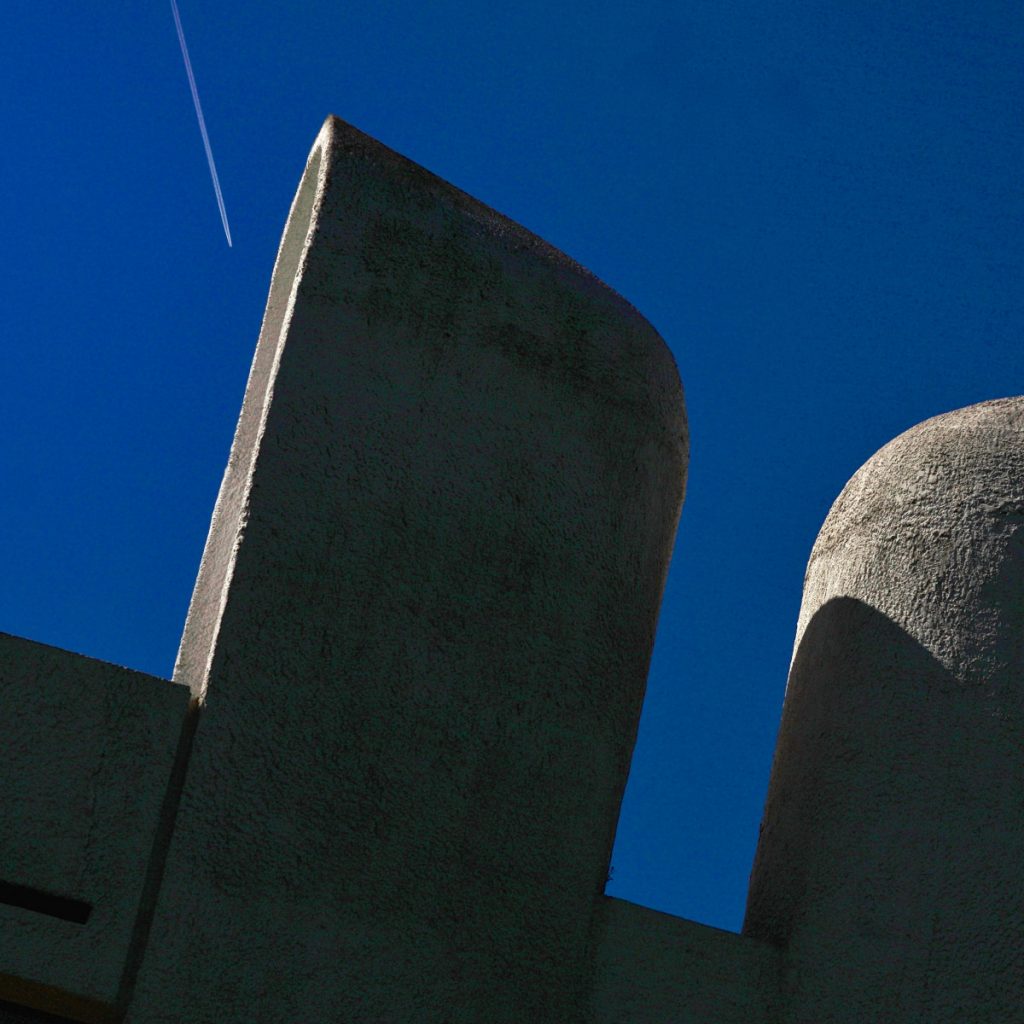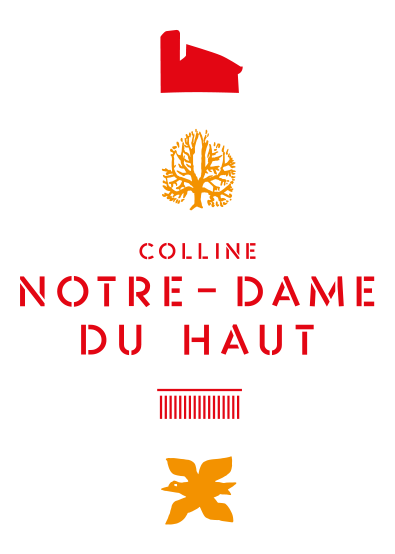- Discovering the Hill
- No content found
- Plan your visit
- No content found
- Agenda
- Shop
Le Corbusier, who conceived architecture as the place where all arts meet, had not forgotten music. The eastern choir was remarkably shaped so that the priest just needs to raise his voice to be heard.
But there was more than that. The Chapel being very modern, Le Corbusier wished that music should be modern as well. As a result, on the inauguration day, he wanted music by Olivier Messiaen, one of the most famous French composers in his time, to be played. Finally, it was a failure since the electric generator set up by the army didn’t work.
The most surprising still is the musical device originally designed for the entrance of the Chapel. Indeed, Le Corbusier had designed an elecroacoustic campanile. According to the known drawings and the model, it should have looked like a portico equipped with a pioneering system to broadcast the sound.
Le Corbusier had talked about this project to the composer Edgar Varèse, with whom he collaborated in 1958 for the Philips pavilion in Brussels. Architecture, sculpture, painting and music would have been reunited in Ronchamp. Too modern and too costly, the system was never built.
As Chaplain René Bolle-Reddat insisted on it, Le Corbusier finally accepted to draw a campanile in 1965. But he died a few weeks later, while swimming in the Mediterranean. It was only ten years later, in 1975, that Chaplain René Bolle-Reddat had a campanile built on the place where there used to be the caretaker’s house, and which René Bolle-Reddat had finally succeeded to have demolished after years of efforts.

The steel structure itself was drawn by Jean Prouvé. It stands 30 meters away from the Chapel. It tries to be as unobtrusive as possible to avoid outshining the Chapel. Still the campanile has subtle links with Notre-Dame du Haut. Its proportions respect Le Corbusier’s Modulor. It is 5,52 meters long and the horizontal beam is 2,26 meters high.
The two biggest bells com from the former chapel. They survived the war, contrary to the third small one which had to be cast again. It comes from the Paccard foundry in Annecy. It is named after both the mother and the wife of Le Corbusier: Charlotte-Amélie-Yvonne-Marie.
The campanile rings the Angelus every day at 9 am and 7 pm. The bells are automatically activated by an electric system linked to the sacristy of the Chapel. It is only on Holy Days that the three bells let their three notes be heard: E for the biggest, F-sharp for the middle-sized one and A for the small one.

13 rue de la Chapelle
F-70250 Ronchamp
+33 (0)3 84 20 65 13
Contact
Until Friday 18 April 2025: 10am to 5pm
From Saturday 19 April 2025: 10am to 6pm
From Monday 12 October 2025: 10am to 5pm
Last admission: 30 minutes before closing time. Closed on 25 December and 1 January
For journalists
Connect
Educational resources
To go further
+33 (0)3 84 20 73 26
Contact
Réalisation DN Consultants